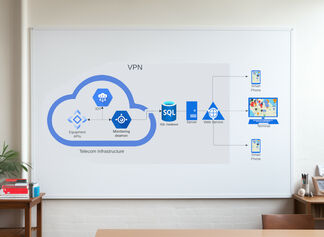Telecoms system monitoring and IoT
The client
Telecoms operator, providing virtual public networks to 2nd tier operators
The challenge
A core telecoms infrastructure distributed across a wide geographic area. Outage is highly expensive. Physical access to the infrastructure equipment is difficult and time-consuming.
The proposal
Create a monitoring system that piggy-backs on the infrastructure service channels. Collect equipment data that provides failure analysis, and also allows failure prediction.
Some key technologies used in this project
The benefits
Maintenance and repair times are reduced significantly reduced. This in turn results in a large reduction in outage and downtime costs.
- #1
Rapid return on investment:
The first system was available within 3 months. Downtime and field engineering costs were instantly reduced, payback took just a few weeks. - #2
Future proof:
Use of open and industry standard software (eg. LINUX, Rest, SSL, SNMP, etc.) results in robust and future-proof architecture. The system has been running for over 5 year with zero downtime. - #3
Low development and maintenance costs:
Use of standard HTML5 for the dashboards and alarms meant that no mobile phone App is required.
Key take aways

Details
A suite of background monitoring processes operate within a VPN. The processes use the telecom equipment signalling and service channels to interrogate the equipment status via SNMP and IoT-like APIs. The data collected from the process is stored on a database within the VPN. A secure webserver within the VPN provides HTML5 role-enabled dashboards and alerts, including segregated dashboard roles for the 2nd tier operator clients of the prime telecom equipment operator.
